Runic tattoo meanings and symbolism have become increasingly popular in recent years, as more people look to connect with ancient cultures and traditions. The runes were originally used by the ancient Germanic peoples as a writing system, but over time, they took on a variety of mystical and spiritual meanings. If you’re considering getting a runic tattoo, it’s essential to understand the different symbols’ meanings and what they represent. In this article with Impeccable Nest, we’ll explore the fascinating meaning of runic tattoos and their designs.
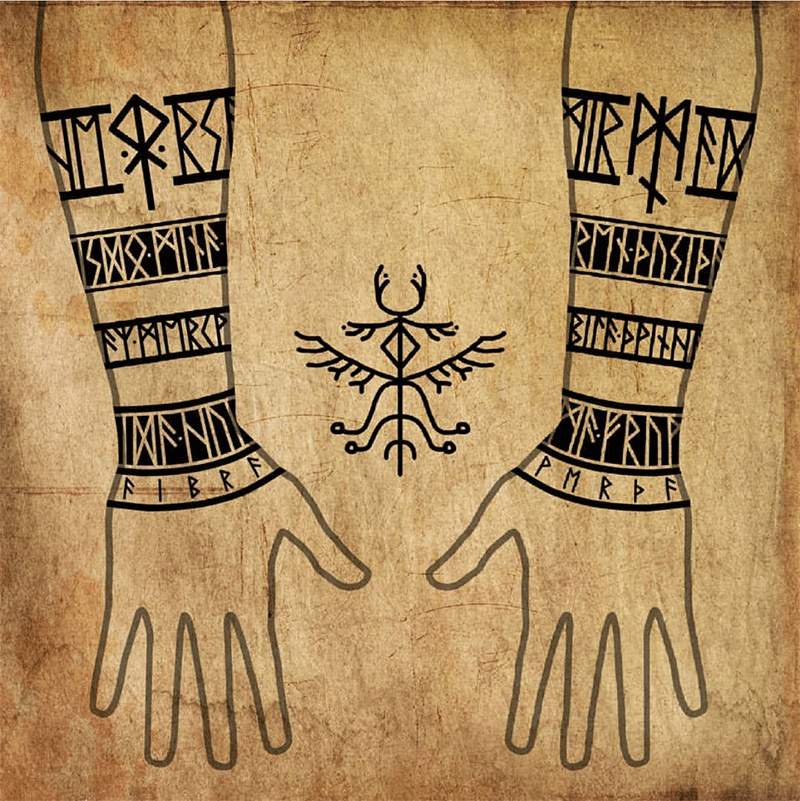
Runic Tattoo Meaning: Exploring the Cultural
Runic tattoos are tattoos that incorporate symbols from runic alphabets, which were used historically by various Germanic and Nordic cultures for writing, divination, and other purposes. The meanings of runic tattoos can vary widely based on the specific symbols used and the intention behind getting the tattoo. Here are a few common runic symbols and their historical meanings:
Algiz (ᛉ)
The runic tattoo symbol is a unique and ancient design that has significant meaning to those who choose to adorn it on their skin. This symbol is easily recognizable, as it resembles the shape of the letter Y, but with two additional diagonal lines. The rune itself originates from the Scandinavian region and was used by the Vikings during the medieval times.
The runic tattoo symbol holds deep significance and represents a variety of different concepts. The most common interpretations of this symbol are protection, guidance, and connection with higher powers. It was often associated with spiritual and divine forces, and many people believed that it could offer them a sense of safety and security.
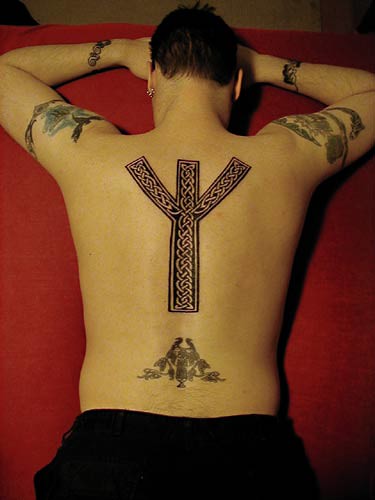
Protection is one of the most important meanings associated with the runic tattoo symbol. People who choose to wear this symbol often do so because they want to protect themselves or their loved ones from harm. In ancient times, the Viking warriors would often inscribe this symbol on their weapons and armor, believing that it would offer them protection in battle.
Guidance is another important concept that is associated with the runic tattoo symbol. This symbol is often seen as a guide or a compass, offering direction and clarity to those who wear it. It is believed that this symbol can help individuals navigate through difficult times and provide them with a sense of purpose and direction.
Connection with higher powers is also a significant meaning behind the runic tattoo symbol. Many people believe that this symbol can help them connect with spiritual and divine forces, allowing them to tap into higher levels of consciousness and understanding. It is believed that wearing this symbol can bring individuals closer to the divine and help them access greater wisdom and insight.
Ansuz (ᚨ)
Runic tattoos have been used for centuries as a means of communicating important messages and values through the use of symbols. One such symbol is Ansuz, which carries a deep meaning associated with communication, wisdom, and divine inspiration.
In Norse mythology, Ansuz is the rune that represents Odin, the all-knowing god of wisdom and war. As such, this rune is often associated with the power of speech and storytelling, highlighting its importance in the exchange of knowledge and ideas. In fact, the word “Ansuz” itself means “mouth,” further emphasizing its connection to oral communication.
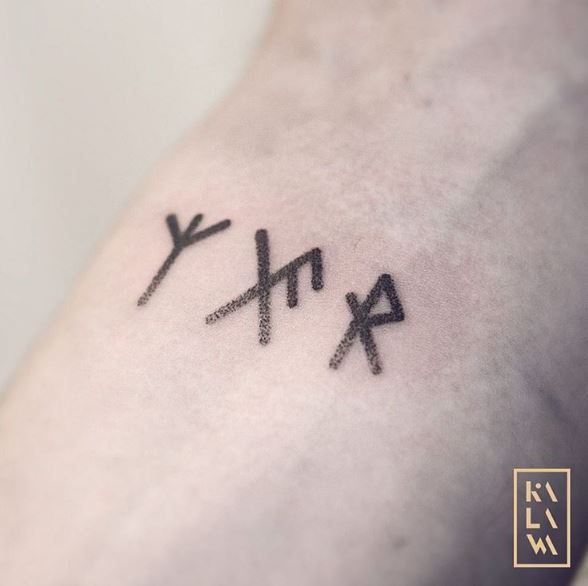
Those who choose to get an Ansuz tattoo may do so to represent their own love for language and communication. It can be seen as a reminder to use one’s words wisely and to always seek out new knowledge and perspectives. Additionally, this rune can be interpreted as a symbol of divine inspiration, representing a connection to higher powers and the ability to tap into hidden reserves of creativity and intuition.
Overall, an Ansuz tattoo can carry a powerful message about the importance of communication and wisdom in one’s life. Whether used as a personal reminder or as a way to honor the god Odin, this rune serves as a timeless symbol of the human desire to seek truth and understanding through dialogue and shared experiences.
Fehu (ᚠ)
Runic tattoos have been a popular form of body art for centuries, and they continue to be a popular choice for those looking to represent spiritual or cultural symbols. One of the most powerful runes is Fehu, which represents wealth, prosperity, and success.
Fehu is an ancient rune that has been used by the Germanic peoples since prehistoric times. It’s often associated with cattle and livestock, which were a valuable asset in ancient times. The rune itself is shaped like a bull’s horns, further emphasizing this connection.
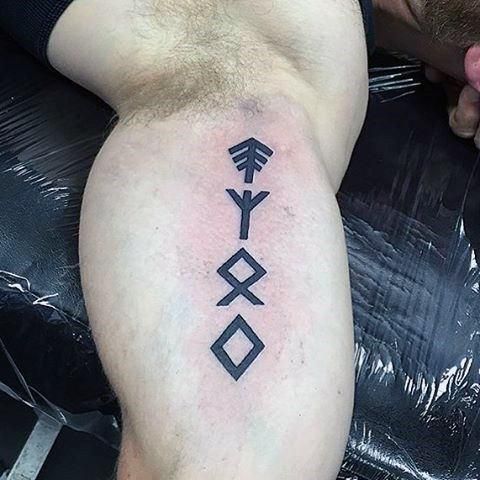
In addition to representing physical wealth, Fehu also signifies spiritual riches. This can include personal growth, emotional fulfillment, and a sense of purpose. The rune encourages us to focus on what truly matters and to work hard to achieve our goals.
When used in tattoo designs, Fehu is often paired with other symbols that reinforce its meaning. Some popular choices include images of cattle or other livestock, as well as money or other forms of currency. The tattoo may also incorporate other runes that represent related concepts, such as Ansuz (wisdom) or Thurisaz (strength).
Inguz (ᛜ)
Runic tattoos have been used for centuries to convey deep meanings and beliefs, and the Inguz symbol is no exception. This rune symbolizes fertility, new beginnings, and growth, and it is connected to the god Ing, who was revered in Norse mythology for his association with agriculture and the cycles of life.
The Inguz rune is often used by individuals seeking to create a fresh start in their lives or to embark on a new journey. It represents the potential for growth and the ability to adapt to changing circumstances. This makes it a popular choice for people going through transitions such as moving to a new city, starting a new job, or beginning a new relationship.
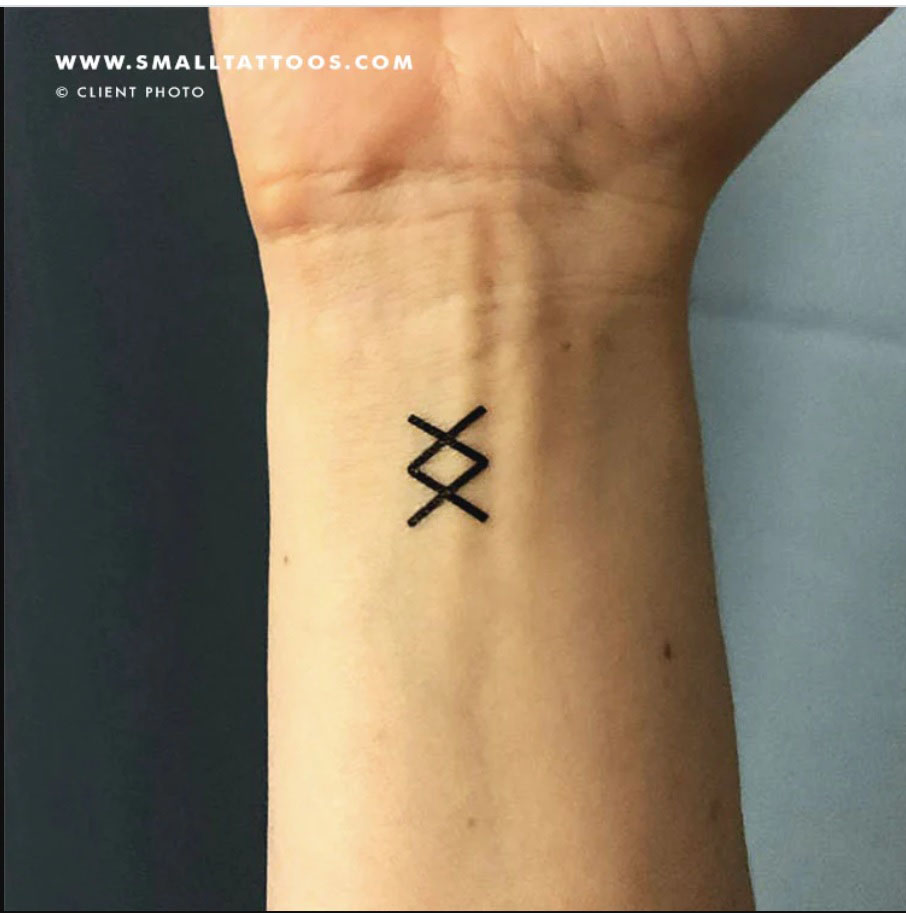
In addition to its association with new beginnings, the Inguz rune also has strong ties to fertility. This is because the god Ing was considered the patron deity of agriculture and was responsible for overseeing the fertility of crops and livestock. As a result, those seeking to enhance fertility or to honor the cycle of life and growth may choose to incorporate this symbol into their tattoos.
Raido (ᚱ)
Raido is a powerful rune in the ancient Germanic language, and it has been used for centuries to represent travel, journeys, and personal growth. This symbol is often associated with physical travels, such as on foot or on horseback, but it also represents spiritual exploration. The meaning of Raido is deeply rooted in the idea of making progress through movement.
In ancient times, Rune masters would use the Raido rune to aid in their travels, and it was believed that this symbol could provide protection and guidance during long journeys. This is because Raido is associated with the concept of momentum and forward movement, both physically and spiritually.

The significance of Raido can be understood by examining its shape. The rune consists of two lines which intersect at a 90-degree angle. This shape represents a journey or path, with one line representing the starting point and the other representing the destination. In between these two points is the journey itself, which is represented by the diagonal line that connects the two. This line can be seen as a metaphor for the ups and downs of life’s experiences.
Furthermore, Raido is also closely associated with personal growth and development. This is because personal growth is often the result of exploration and discovery, whether it’s exploring new places or new aspects of oneself. When Raido appears in a runic tattoo, it can serve as a reminder to the wearer to continue striving for personal growth and to embrace new experiences.
Thurisaz (ᚦ)
Runic tattoos are a popular form of body art that have become increasingly popular in recent years. These tattoos feature ancient symbols from the runic alphabet, which was used by Germanic tribes during the Viking Age and Medieval period. One such rune is Thurisaz, which carries a unique and powerful meaning.
Thurisaz is the third letter of the Elder Futhark runic alphabet, and it represents the thorn or thorn-like barriers that can impede progress. This symbol is often associated with protection, defense, and the ability to overcome obstacles. It is said to have a masculine energy and is connected to the god Thor, who was known for his strength and power.
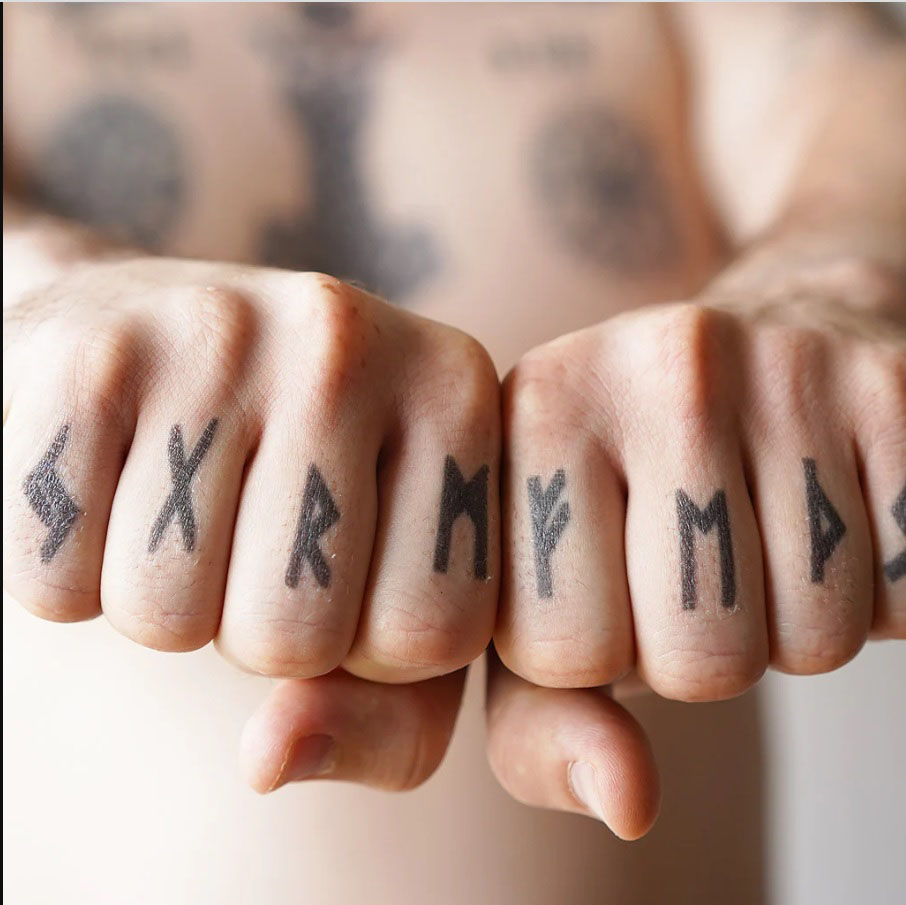
Those who choose to get a Thurisaz tattoo may be seeking protection or strength in their lives. They may feel that they need to defend themselves against negative energies or overcome obstacles that seem insurmountable. The symbol of Thurisaz suggests that one can rise above these challenges and emerge stronger on the other side.
The thorn-like barriers associated with Thurisaz may also represent the idea of boundaries and limitations. In this sense, the tattoo may symbolize the importance of setting healthy boundaries in one’s personal and professional relationships. By doing so, one can protect themselves from harmful influences and create a safe space for growth and development.
Uruz (ᚢ)
Runic tattoos have been used for centuries as a way to convey both personal and spiritual meanings. The Uruz rune, in particular, holds deep significance in ancient Norse and Germanic cultures. This symbol is often associated with strength, vitality, and primal energy, making it a popular choice for those seeking to express their inner power or connection to nature.
The Uruz rune has a long history of use throughout northern Europe and Scandinavia, where it was believed to hold protective properties and provide the wearer with physical and mental strength. In Viking mythology, the god Thor was said to carry a hammer inscribed with the Uruz rune, which he used to channel his immense power and defeat his enemies.
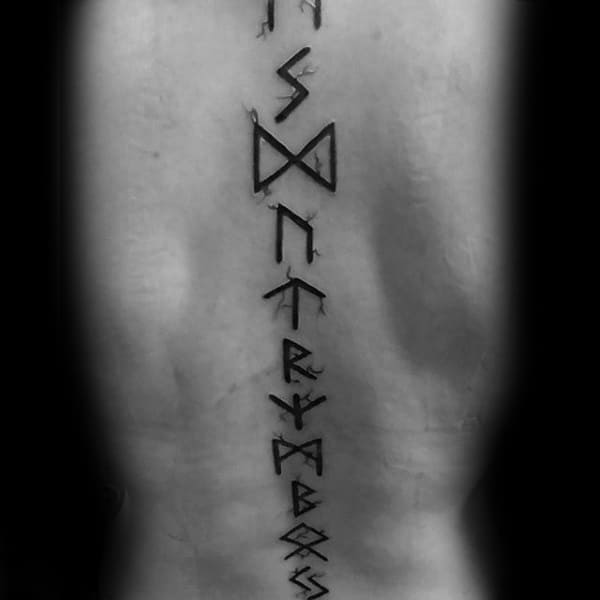
The Uruz symbol is often depicted as a diagonal line with two smaller lines branching off to either side, resembling the shape of an arrow or spearhead. This design is meant to evoke feelings of strength, speed, and agility, as well as the untamed forces of nature and the wild aspects of life. For this reason, many people choose to incorporate the Uruz rune into tattoo designs that feature elements of the natural world, such as animals, trees, or mountains.
In addition to its associations with physical strength and vitality, the Uruz rune also carries deeper symbolic meanings related to personal growth and transformation. Some interpret this symbol as representing the journey from darkness into light, or the process of breaking down old patterns and beliefs in order to make way for new growth and change.
Wunjo (ᚹ)
Runic tattoos are a form of tattoo art that incorporates ancient Nordic symbols and runes. These runes were used by the Vikings and other Germanic peoples for writing, divination, and magical purposes. Each rune has its own unique meaning and significance, and when combined with others, they create powerful messages and symbols.
One rune that is often used in runic tattoos is Wunjo. This rune is associated with joy, harmony, and contentment. It is believed to be a symbol of positive emotions and good fortune. Those who wear a Wunjo tattoo may do so to bring more happiness and peace into their lives, or to celebrate a joyful event such as a wedding or the birth of a child.
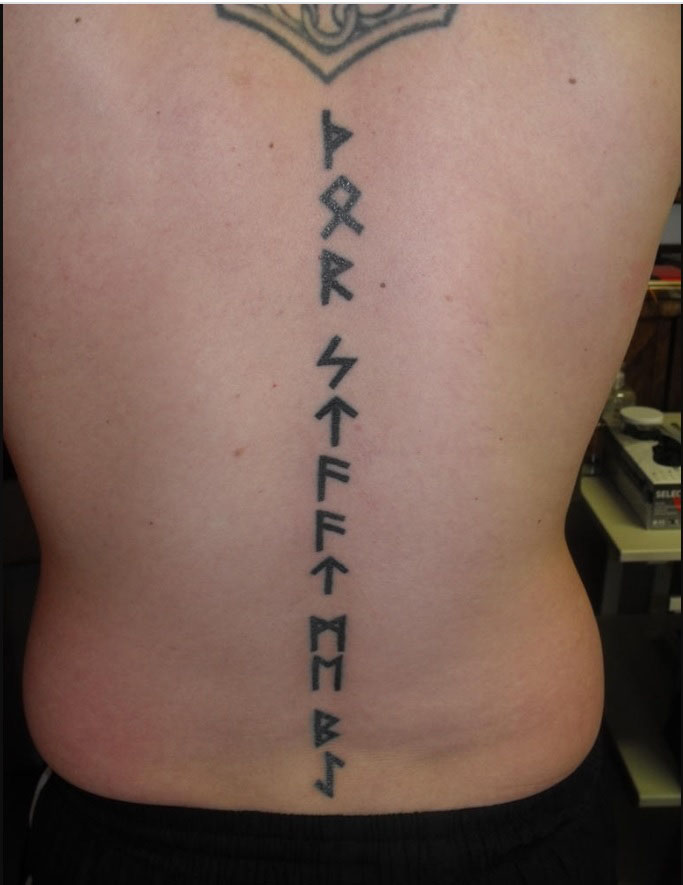
In addition to its association with joy and positivity, Wunjo is also said to represent the bond between family members or close friends. It can be seen as a reminder of the importance of nurturing relationships and working together towards common goals. For some, a Wunjo tattoo may be a symbol of their commitment to building strong connections with those around them.
The shape of the Wunjo rune itself is also significant. It resembles an “X” with two diagonal lines crossing each other in the center. This geometric design has been used in various cultures throughout history as a symbol of balance, stability, and harmony. In the context of a runic tattoo, it may represent the need to find balance and harmony within oneself in order to achieve true joy and contentment.
Sowilo (ᛋ)
Runic tattoos have been around for centuries and are symbolic of various concepts, ideas, and beliefs. One such tattoo symbol is Sowilo, which represents the sun, light, and success. The Sowilo rune has its roots in ancient Germanic and Norse mythology, where it was believed to be a powerful symbol of life energy, transformation, and enlightenment.
In the ancient Norse religion, the sun played a crucial role in the lives of people, and as a result, the Sowilo rune became a powerful symbol of light and warmth. The rune was also associated with success and victory, making it a popular choice for warriors and leaders who sought to gain power and influence.
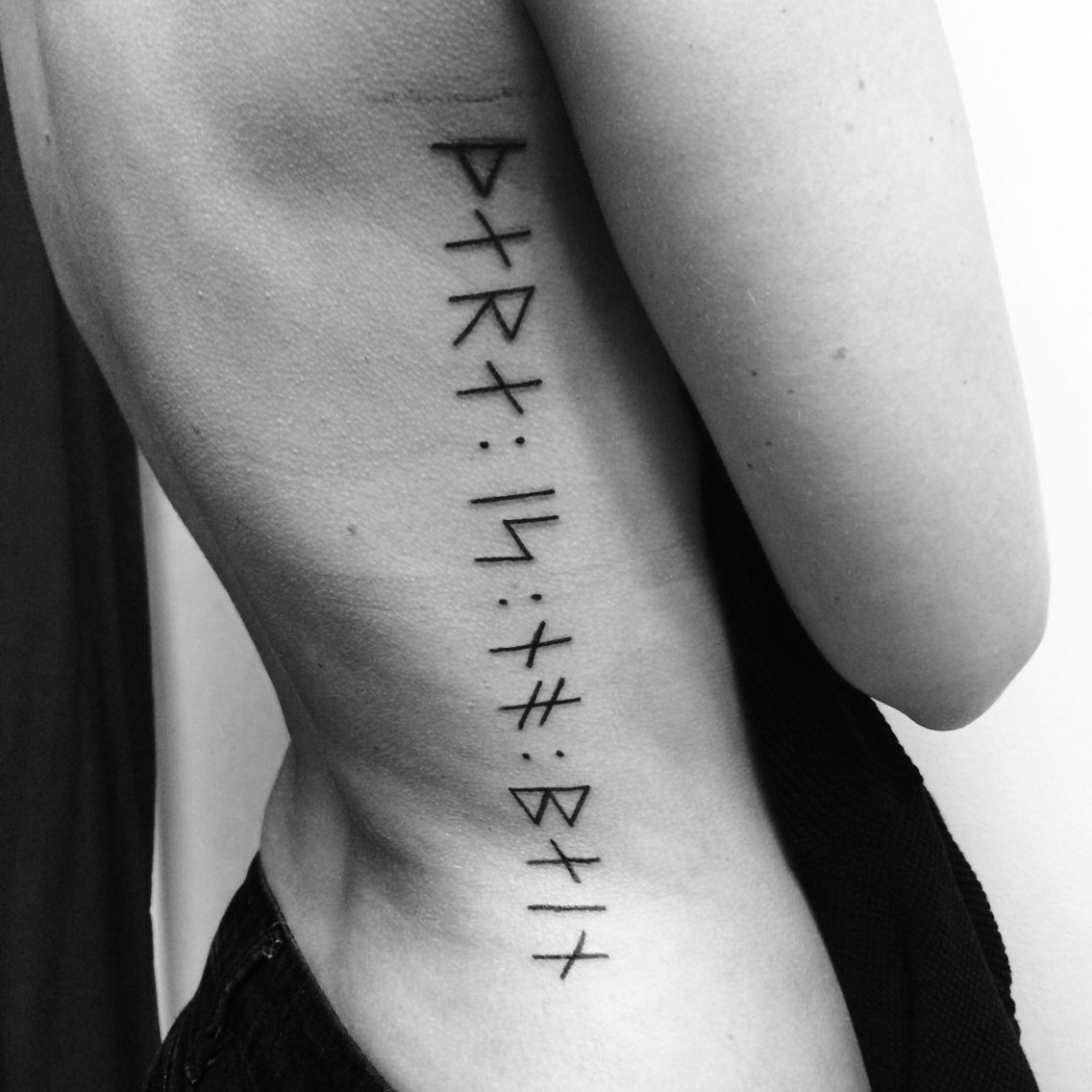
Moreover, the Sowilo rune represents transformation and change. It signifies that one can rise above their current situation and transform themselves into something better. This idea of transformation is deeply ingrained in ancient Nordic mythology, where gods and heroes often transformed themselves to overcome obstacles and achieve their goals.
Finally, the Sowilo rune is a symbol of enlightenment. It represents the idea that one can attain a higher state of consciousness or understanding through spiritual practices such as meditation or introspection. This concept is also found in many other ancient cultures, where symbols like the sun or light represent the path to enlightenment and wisdom.
Gebo (ᚷ)
Runic tattoos have been around for centuries and are still popular today as a way to express oneself. One of the most common runic tattoo symbols is Gebo, which represents gifts, partnerships, and exchanges. This symbol has a deep-rooted meaning in Norse mythology and culture, but it can be interpreted in many different ways depending on the individual.
Gebo is the seventh rune in the Elder Futhark, the oldest known runic alphabet used by Germanic tribes. It resembles an “X” shape with two lines crossing in the middle, forming four arms of equal length. The word “gebo” itself means “gift” or “offering” in Old Norse, and this is reflected in the symbolism of the rune.
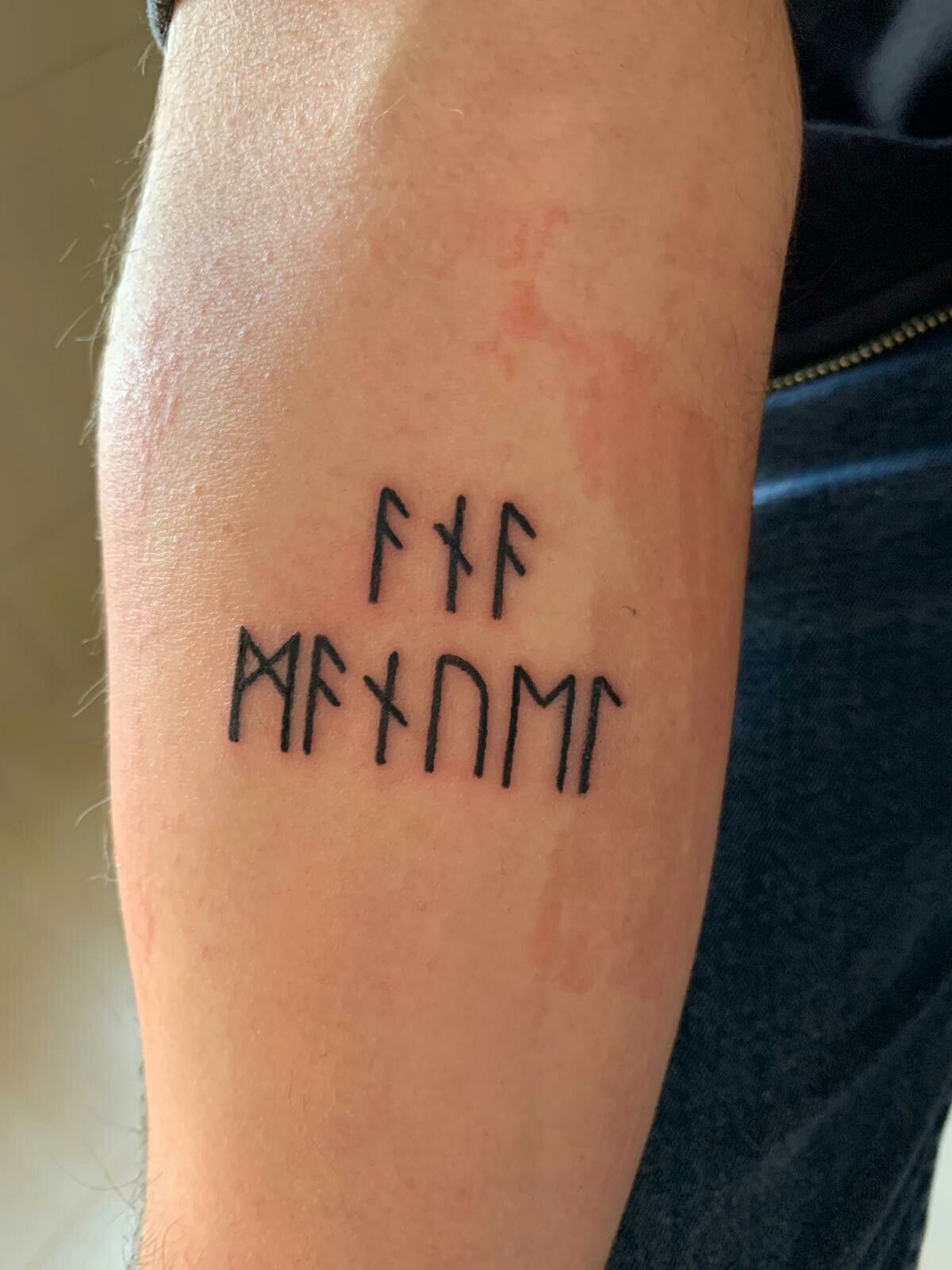
In Norse mythology, Gebo was associated with the god Odin, who sacrificed himself on the world tree Yggdrasil in exchange for knowledge and wisdom. This act of sacrifice and exchange embodies the idea of Gebo – that nothing comes without a price and that everything in life is a give-and-take relationship. In this sense, Gebo represents balance and harmony, as well as the idea of reciprocity and mutual benefit.
When used as a tattoo symbol, Gebo can represent a variety of personal meanings. Some people may get a Gebo tattoo to signify an important gift or offering they’ve received in their life, such as a significant other or a job opportunity. Others might use it to symbolize the importance of balance and harmony in their relationships with others. Still, others might see Gebo as a reminder that every action has a consequence and that everything we do in life involves some kind of exchange.
It’s important to note that while these are some general meanings associated with these runic symbols, interpretations can vary based on personal beliefs, cultural contexts, and individual intentions. If you’re considering getting a runic tattoo, I recommend conducting thorough research and consulting with experts in Norse or runic symbolism to ensure that your chosen symbol accurately represents your intended meaning.
Examples of Runic Tattoos and Their Meanings
Runic tattoos can take many different forms, from simple single-rune designs to more complex combinations of symbols. Here are some examples of popular runic tattoos and what they represent:
Single Rune Tattoos
Single rune tattoos are a simple but powerful way to express your values or beliefs. For example, getting the Ansuz rune tattooed on your body could signify your dedication to clear communication and effective self-expression.
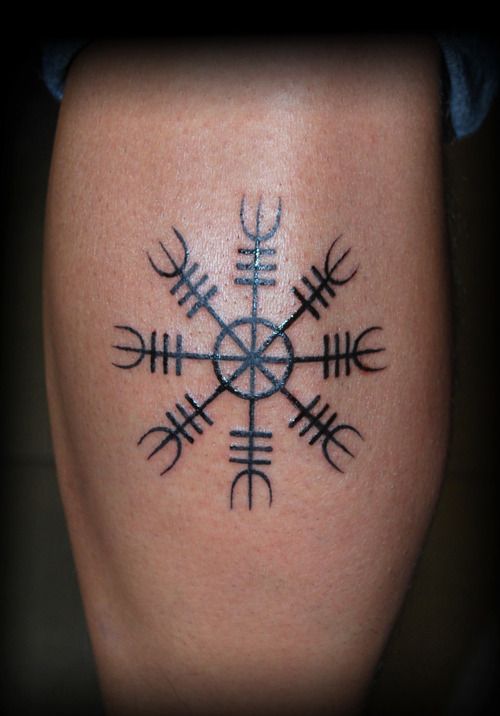
Bind Runes
Bind runes are created by combining two or more runes to create a unique symbol. These tattoos are highly personal and can be used to represent a wide range of ideas and concepts. For example, a bind rune made up of Gebo and Algiz could represent the protective power of love and friendship.
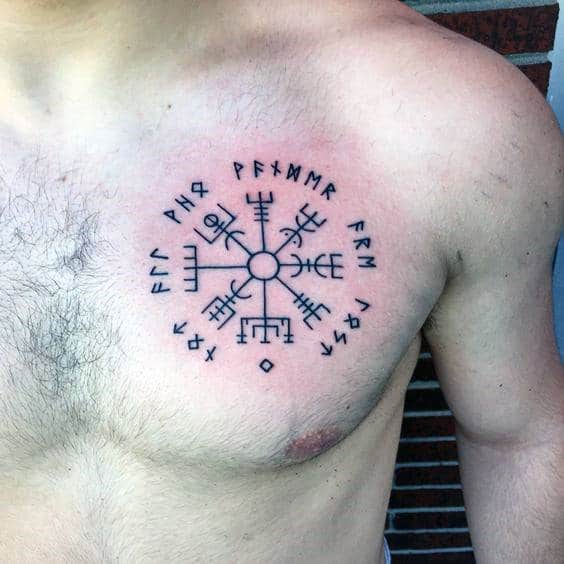
Tree of Life
The Tree of Life is a popular Norse symbol that represents the interconnectedness of all living things. This design typically incorporates multiple runes and can be used to signify the importance of family, community, and spiritual connection.
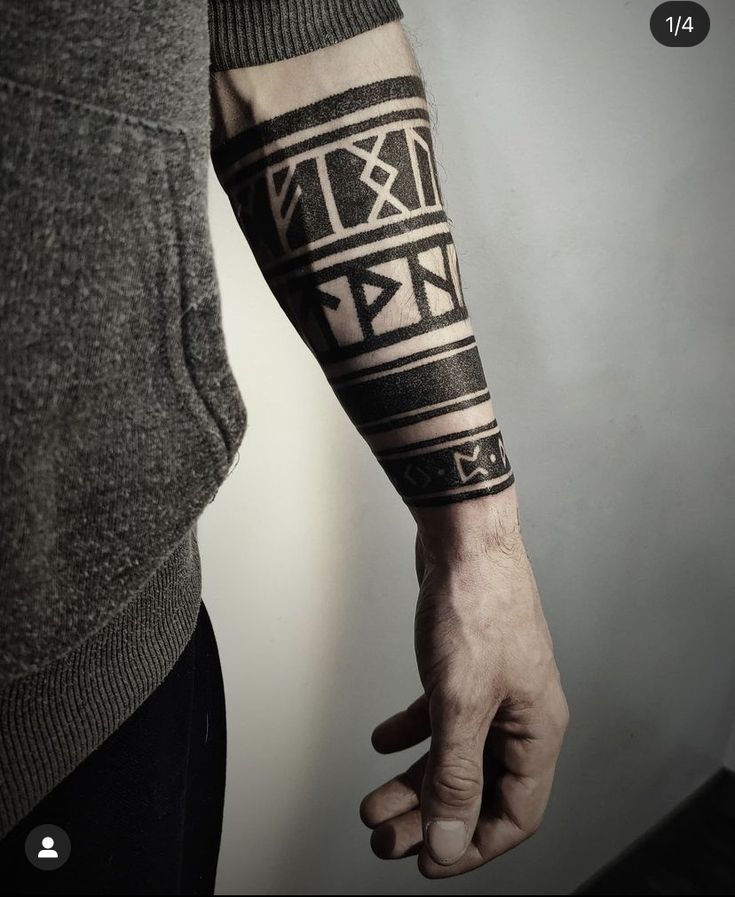
Comparing Different Runic Symbol Meanings
While each rune has its own unique meaning, some symbols have similar connotations. For example, both Algiz and Thurisaz represent protection and defense, while Raidho and Eihwaz both symbolize journeys and transitions.
When choosing a runic tattoo, it’s important to consider what specific qualities you want to embody and choose a symbol that aligns with those values.
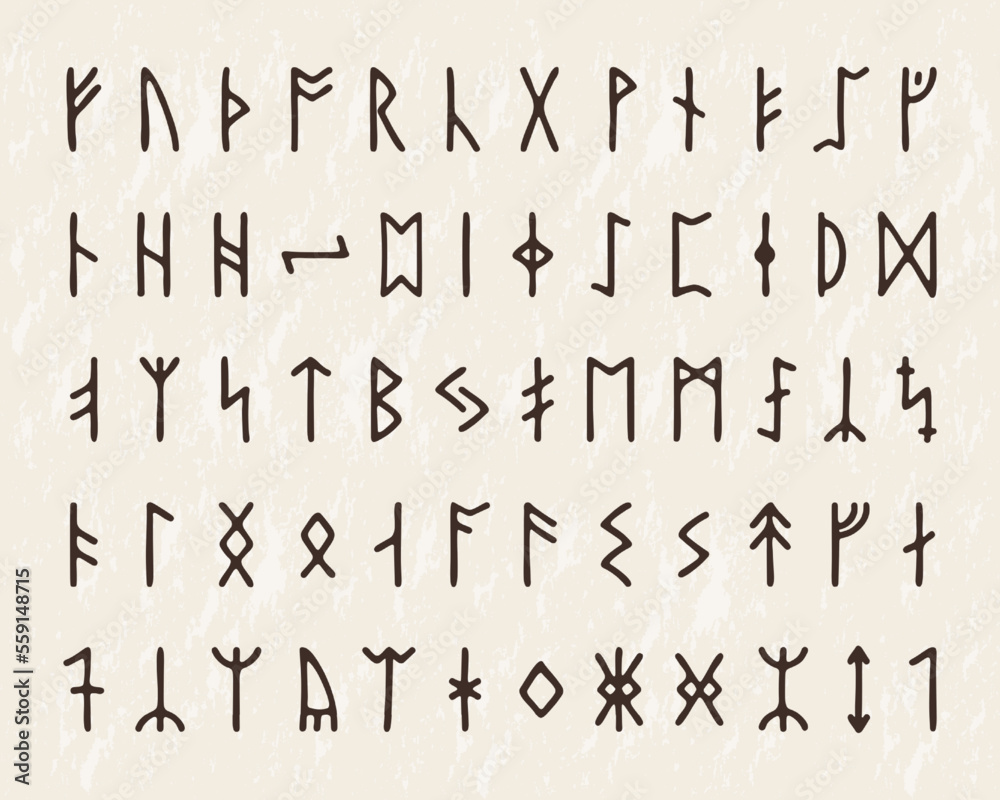
Conclusion
Runic tattoo meanings and symbolism offer a fascinating window into the ancient cultures and traditions of northern Europe. Whether you’re drawn to the protective power of Algiz or the creative energy of Kenaz, there is a runic symbol that can represent your individual values and beliefs.
When choosing a runic tattoo, it’s important to do your research, consider the placement and choose a skilled artist who can bring your vision to life. With these tips in mind, you’ll be well on your way to creating a meaningful and powerful runic tattoo that reflects who you are and what you stand for.

I am Harvey Berry, a tattoo enthusiast who has immersed himself in the diverse world of ink, passionately exploring the beauty and artistry within each tattoo. My mission extends beyond uncovering the aesthetics of tattooing; it involves sharing in-depth knowledge across all aspects of this art form.
Fueled by genuine curiosity and love for every facet of tattooing, I have diligently crafted well-researched articles, with a special focus on the Tattoo Meaning of Impeccable Nest section. Here, my aim is to help the tattoo community gain a deeper understanding of the meanings and values embedded in each tattoo.
One of my primary goals is to encourage responsible decision-making when it comes to getting inked. I recognize that choosing to get a tattoo is a significant personal decision that requires careful consideration. Hence, I provide diverse resources covering the meaning of tattoos, the tattooing process, aftercare tips, and other valuable information.
Whether you are a seasoned tattoo enthusiast or embarking on your first exploration of the world of body art, I aspire to be a reliable resource for you at every step of your journey. I hope that my extensive knowledge of tattoos, especially in the Tattoo Meaning section, will assist you in finding inspiration to express yourself through the art of tattoos.
